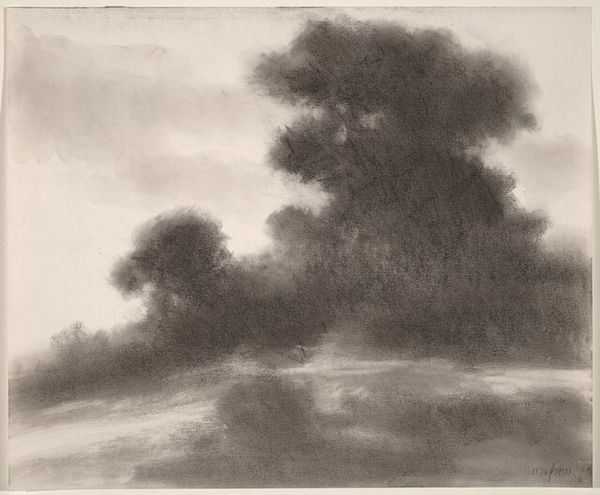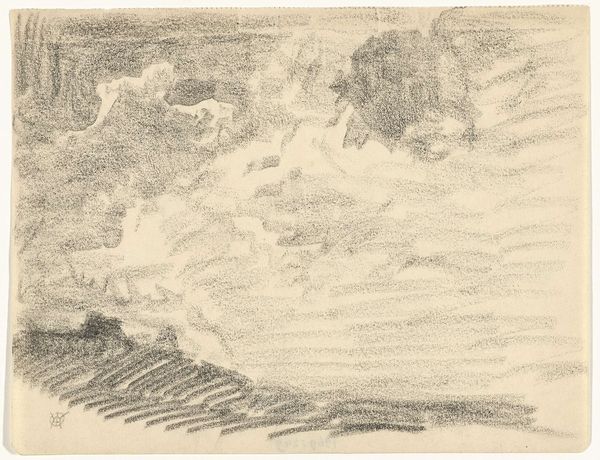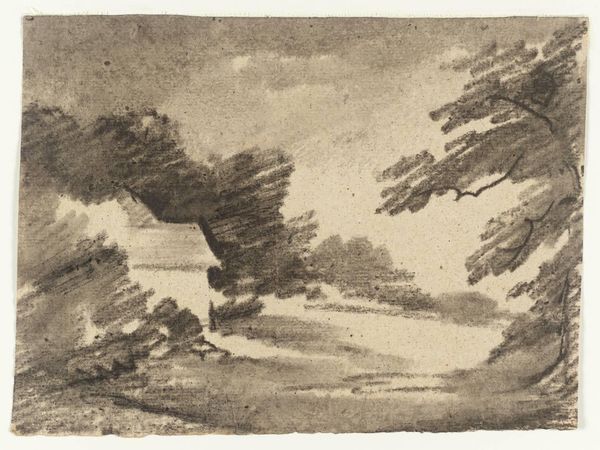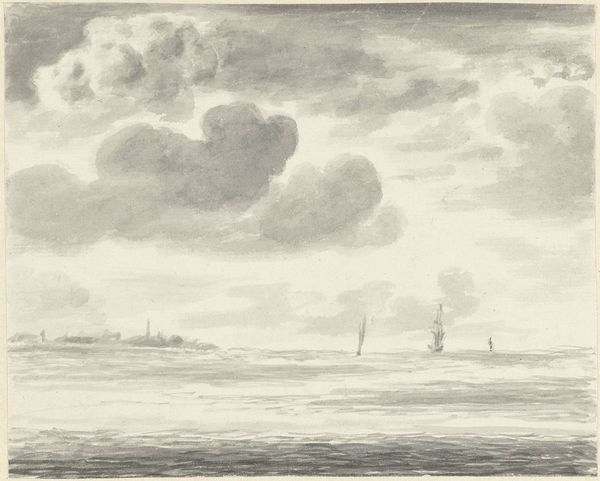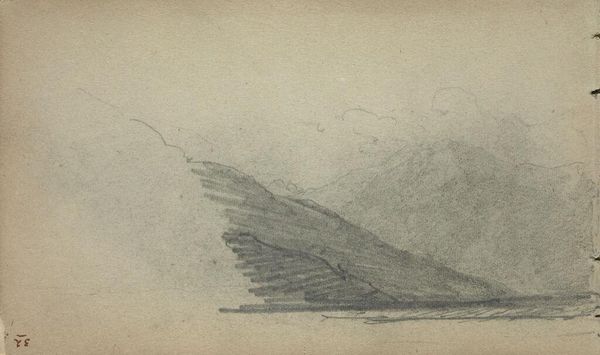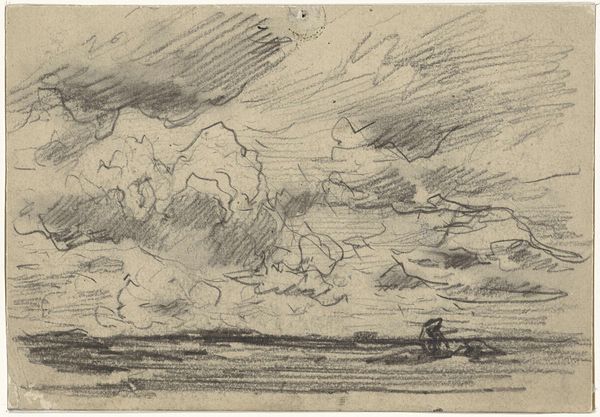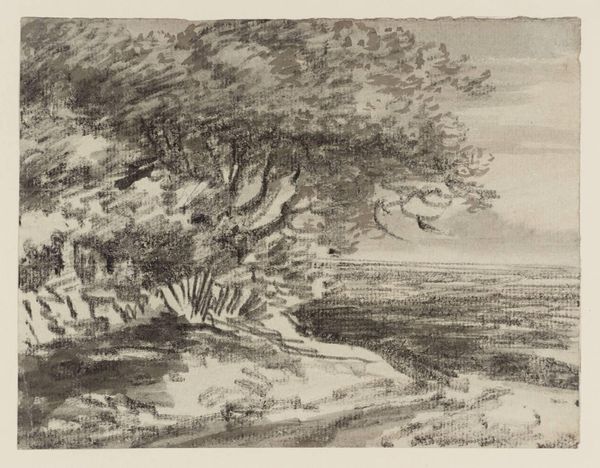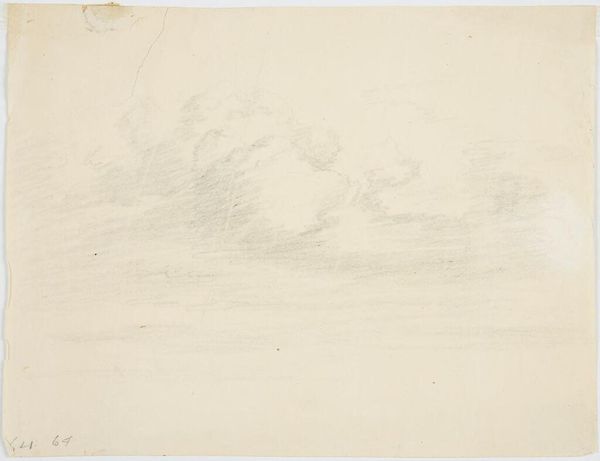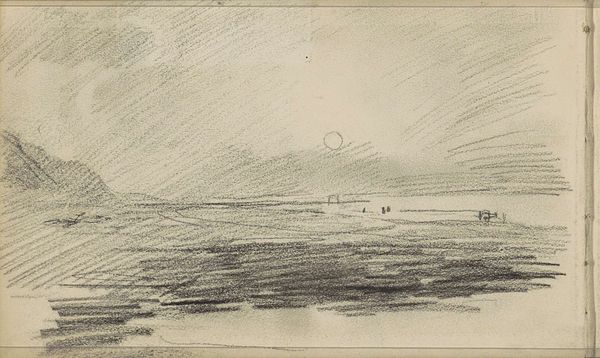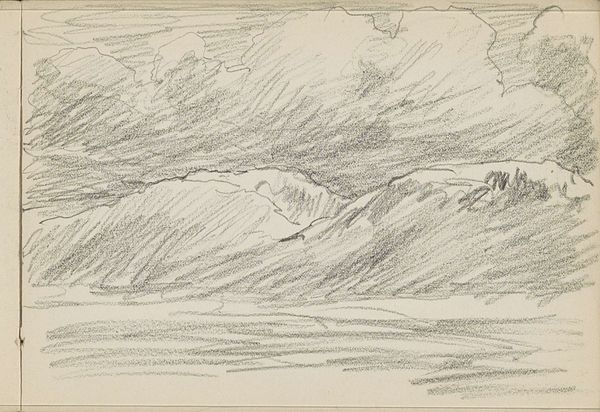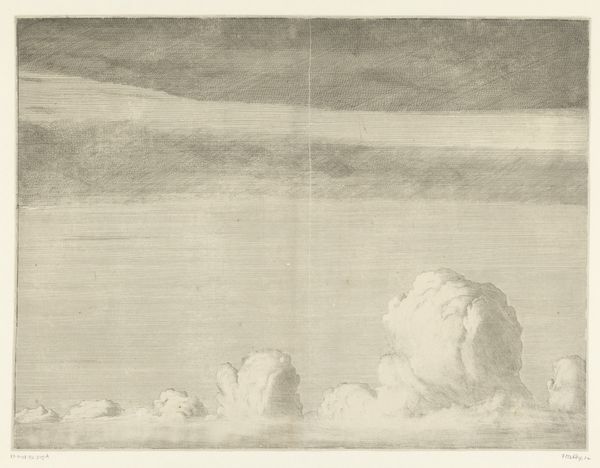
drawing, pencil, graphite
#
drawing
#
landscape
#
pencil drawing
#
pencil
#
abstraction
#
graphite
Copyright: Public Domain: Artvee
Editor: Here we have Karl Wiener’s “Ohne Titel, Bleistiftskizze,” a pencil sketch from around 1930. It looks like an abstract cloudscape… almost like a dream. What do you see in this piece? Curator: I see more than just a dream, I see a coded response to a world in turmoil. Look at the period, the late 20s and early 30s; there’s a sharp rise of fascism. Does this abstracted cloud, almost cartoonish in its rendering, suggest to you an escape? A turning away from what's happening on solid ground? Editor: That's interesting. I hadn't considered it in that context. It did seem quite simple at first glance, but now I see a kind of… deliberate naivety, perhaps? Curator: Exactly! And think about abstraction as a strategy. If Wiener had created realistic depictions of social unrest, he might have faced censorship, worse still; his own persecution. Abstraction becomes a safe space for him, a form of coded protest, if you will. How does knowing the time frame affect your viewing experience? Editor: It definitely complicates it in a good way. What I took as simple or naive, now reads like…resistance. It highlights the power of art to offer a critique without being explicit. Curator: Yes! And the quietness of a pencil sketch—doesn't that amplify the message, subtly defying the rising storm? Consider who has the privilege to openly express themselves in such a world? Wiener subverts that power. Editor: That's powerful. I never would have approached it this way. Thank you! Curator: It is vital that we learn how historical context and artistic expression intersect, and I am glad you could appreciate this subtle dialogue on injustice.
Comments
No comments
Be the first to comment and join the conversation on the ultimate creative platform.

